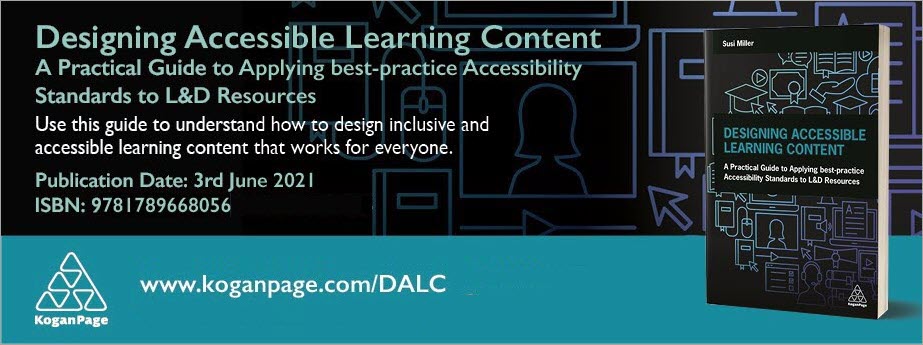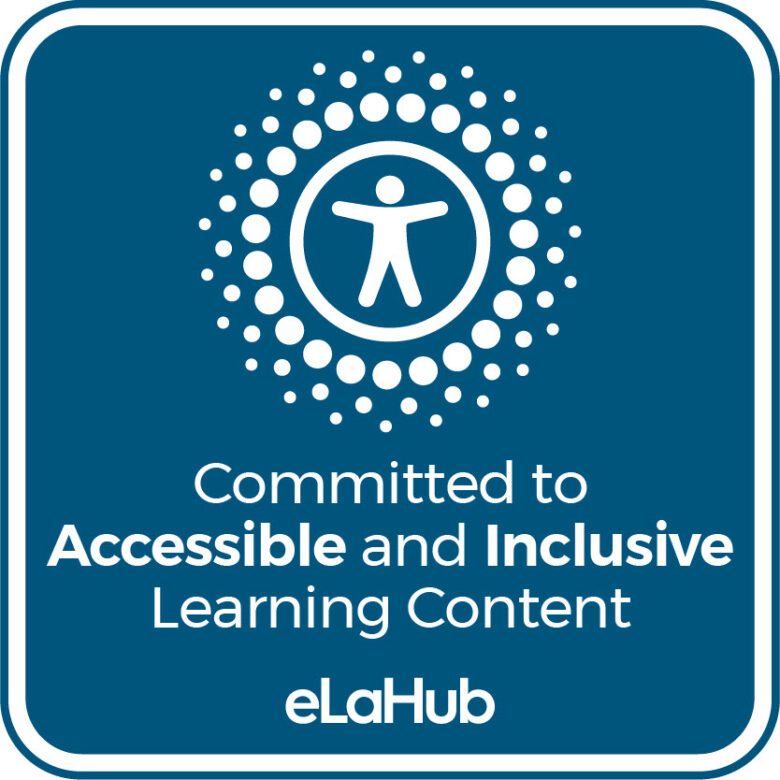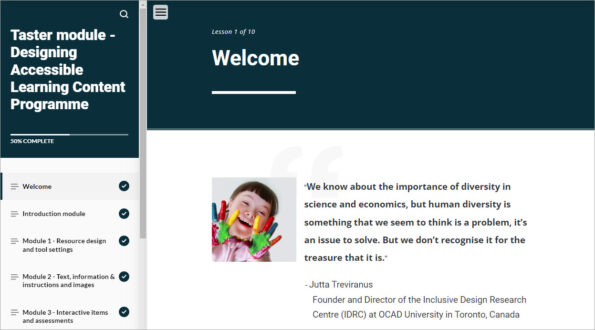Over the past eight months, I’ve been working on converting my book Designing Accessible Learning Content, into an online self-access programme. My goal is to create a learning resource that’s inclusive, interactive and engaging and of course, accessible to international legal standards.
To be honest I’m finding it quite a challenge – for various reasons. Firstly, I’m still getting to grips with a recent dyslexia diagnosis. I’ve realized that although the way I make sense of things helps me to explain them to other people, the challenges I face working out how to do this can often make it a very time-consuming process. Secondly, the programme is my opportunity to demonstrate that accessibility isn’t a boring, complex subject centered on technical regulations. I want to prove just how interesting, engaging and inspiring it can be. I also want to highlight how it can significantly impact people’s learning experiences and lives. Lastly, I’m challenging the common belief in L&D that creating accessible learning content for people with disabilities and access needs compromises learning for everyone else. My own experience and that of the many clients I’ve worked with clearly show that accessibility makes learning more effective and engaging for all learners. The Designing Accessible Learning Content Programme is my opportunity to prove this.

These challenges have sometimes made me question whether it’s really worth all the time and effort it’s taken me so far. But a question from Chris Van Wingerden on the IDIODC podcast I was involved in a few weeks ago gave me just the lightbulb moment I needed to keep motivated. We were discussing the practice of providing a text PDF or Word version of an online course which is sometimes accepted as the ‘accessible alternative’ for people with disabilities and access needs. Chris asked, ‘But if we think that a text version is the best way for people to learn, why are we going to the trouble of providing an interactive and engaging learning experience at all?’

And that, I realised, is the very valid reason why it has been, and continues to be, worth devoting such time and commitment to the Designing Accessible Learning Content Programme. Our IDIODC discussions around attitudes to accessibility in the L&D industry also helped to confirm that the programme is definitely a much-needed resource. Transforming my book into an interactive and engaging learning course has provided me with invaluable opportunities to learn more and grapple with some of the complexities of applying the WCAG standards to learning content. As Maya Angelou said. ‘Do the best you can until you know better. Then when you know better, do better.’
The Designing Accessible Learning Content Programme is my opportunity to do better. I’ve set myself a high standard and I’d love your feedback. The full programme is set to launch in Autumn, but eLaHub will be releasing a Taster module to celebrate Global Accessibility Awareness Day (GAAD) on 18th May 2023.

Use the link below to sign up and unlock the 7 free lessons in the taster module. If you complete the module you’ll get a digital badge and the opportunity to give us some feedback on what you think. We’re also offering access to the full programme for the most helpful feedback we receive.
Sign up for the Designing Accessible Learning Content Programme taster module




Recent Comments